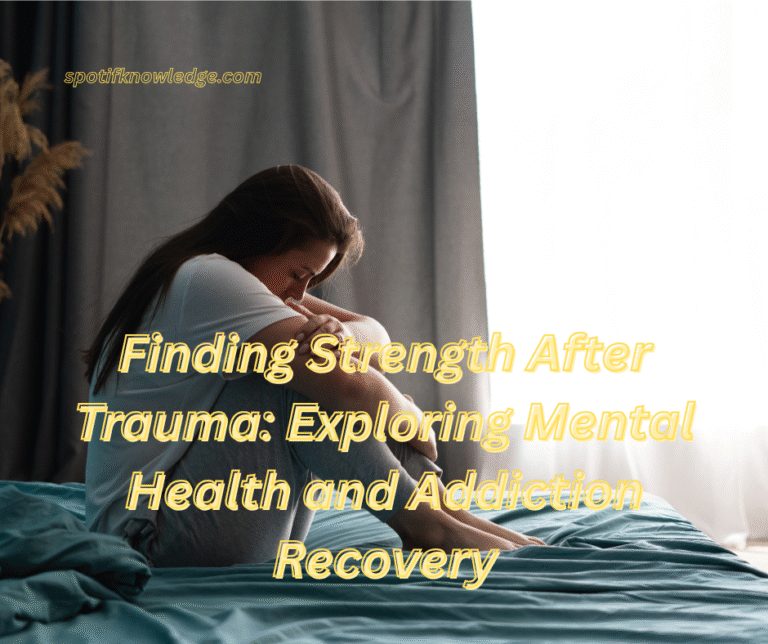Trauma changes people. It can disrupt how individuals see the world, interact with others, and feel about themselves. Whether it stems from a single life-threatening event or a series of distressing experiences, trauma often leaves emotional and psychological scars that linger for years. For some, these wounds become a constant presence in daily life—manifesting as anxiety, depression, panic, or an overwhelming sense of fear or detachment.
One of the most well-known trauma-related conditions is post-traumatic stress disorder. It can emerge after intense or repeated exposure to deeply distressing experiences. People dealing with this condition may experience flashbacks, insomnia, nightmares, mood swings, or a heightened sense of alertness that never fully turns off. The effects can feel isolating and hard to explain to others, especially when the trauma isn’t visible.
In many cases, healing begins with simply being heard and validated. A trauma-informed environment can make a significant difference in how someone begins the recovery process. Supportive care and therapeutic guidance are crucial to rebuilding emotional safety. Access to Post-Traumatic Stress Disorder (PTSD) treatment can be a transformative step for those ready to face the pain and begin working toward long-term recovery. These programs are designed to help individuals process trauma without retraumatization and to regain control over their lives.
Unfortunately, many people suffering from trauma don’t immediately receive the care they need. In an effort to cope with overwhelming emotions or escape painful memories, some may turn to other self-soothing behaviors that can evolve into dependency. What might seem like a temporary solution can slowly become another serious challenge to overcome.
When these coping mechanisms become frequent or hard to manage, they often intensify the emotional symptoms they were meant to numb. Feelings of guilt, shame, isolation, and fear can increase. Sleep patterns may worsen, decision-making becomes impaired, and personal relationships may begin to suffer. Left unaddressed, these cycles can lead to significant harm to mental and physical health. Seeking professional help during this stage is essential to begin breaking those patterns and building healthier ways of living.
The most effective recovery plans tend to address both the trauma and the behavioral health issues at the same time. Treating one without the other often leads to relapse or limited progress. Integrated care allows individuals to explore how past experiences may have influenced their behaviors, while also building practical tools for managing stress and emotional triggers without harmful coping methods.
Therapy plays a foundational role in this process. Cognitive-behavioral therapy (CBT) helps people identify and reframe the negative thought patterns that contribute to anxiety and depression. Eye Movement Desensitization and Reprocessing (EMDR) is especially effective in helping individuals process traumatic memories. These techniques, among others, offer structured ways to understand the connection between trauma and current emotional struggles.
In addition to individual therapy, group support can be powerful. It helps people feel less alone in their pain and fosters a sense of connection. Whether through peer-led groups or therapist-facilitated sessions, sharing experiences with others who understand can be deeply validating. These spaces often serve as safe environments where individuals can express emotions freely and receive encouragement.
A successful recovery plan often includes more than just therapy—it addresses the whole person. Physical well-being matters. A balanced diet, regular exercise, and quality sleep contribute to emotional regulation and mental clarity. When the body is cared for, it becomes easier to engage in the emotional work needed for healing.
Holistic practices are also becoming an important part of trauma recovery. Mindfulness, yoga, art therapy, and breathwork offer new ways to reconnect with the body and calm the nervous system. When combined with a specialized addiction recovery program, these approaches can provide a more balanced and empowering path to long-term healing.
Rebuilding life after trauma takes time. The process often involves rediscovering who you are, what you value, and what brings you peace. Many people in recovery begin to reconnect with hobbies or passions they set aside during their struggles. Others take steps to repair relationships, set boundaries, or create new routines that support emotional wellness.
Equally important is cultivating self-compassion. Many individuals carry guilt or shame over what they’ve experienced or how they’ve coped. Recovery offers the chance to let go of that burden. It’s not about forgetting the past—it’s about learning to live in the present with greater understanding, purpose, and resilience.
Support from others plays a critical role in this journey. Whether from friends, family, professionals, or peers in recovery, consistent encouragement can provide the strength to keep going. For loved ones supporting someone through trauma, patience and empathy are key. Listening without judgment and offering presence over advice can be more impactful than words.
Society is slowly moving toward greater understanding of mental health and behavioral challenges. But stigma still exists, and it can prevent people from asking for help. It’s important to challenge those misconceptions. Healing is not a sign of weakness—it’s a sign of strength. Asking for support is a bold, courageous act that can change the trajectory of someone’s life.
If you or someone you care about is navigating trauma, dependency, or both, know that there are paths to recovery that honor your story and support your growth. You are not defined by what happened to you. Your future can be shaped by how you choose to heal.
In Closing
Recovering from trauma and harmful coping patterns is not easy, but it is possible. Every person’s path looks different, and that’s okay. What matters most is the willingness to begin, to reach out, and to keep moving forward—no matter how small the steps may seem. With time, support, and the right resources, healing can become a reality.

